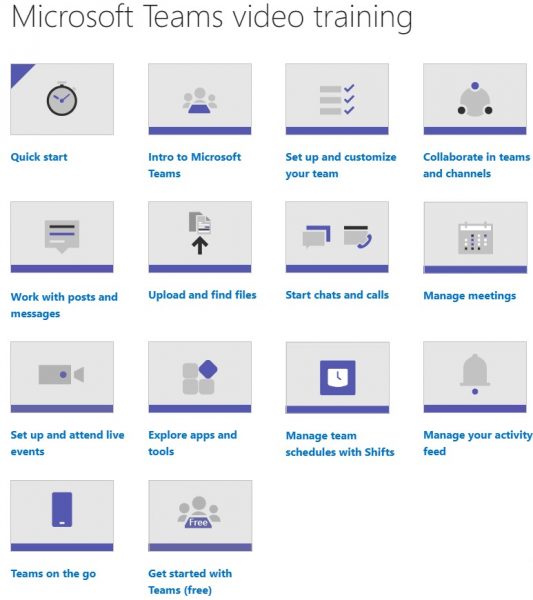Case Study: The Bridges Shopping Centre
Introduction The Bridges shopping centre, situated in the heart of Sunderland city centre, is the home
Find out more

The Coronavirus crisis has thrown many office workers into an unprecedented working environment, with companies around the globe rolling out working-from-home programmes for their employees.
For those who might find themselves at home for an extended period of time, what is the best way to maximise productivity, ensure a constant stream of communication with colleagues, and not lose track of your projects and deadlines?
Well, Microsoft Teams could well be the answer. The remote working platform, which is part of the Microsoft 365 package is essentially an all-in-one communications app. Its efficient and simple functionality combines both transparency and security in once place, meaning teams within a business can have their own chats and calls without having to disturb the notification feeds of colleagues outside their inter-teams.
Below, we list some of the app’s best features and how they can be integrated into your normal working routine.
Microsoft Teams is fully integrated to Microsoft 365, and combines chat, meetings, notes, and attachments which allows colleagues and clients alike to seamlessly interact with each other wherever they are; assets such as calendars, files, and email can all be shared too.
Due to Teams being part of a wider package, the integration means you can open up documents from other applications. This includes the classic Microsoft tools such as Word, Excel, Skype for Business, and PowerPoint. It also incorporates newer tools such as SharePoint, OneNote, Planner, Power BI, Delve, and Microsoft Graph. Microsoft Teams is always up-to-date, and its scalability means that it’s easy to add users.

Another advantage of Microsoft Teams is the flexibility to have meetings with staff and clients anywhere, any time. External meetings shouldn’t have to falter because both parties are working remotely.
With Microsoft Teams, users can have audio, video or web conferences providing they have both a webcam and a microphone. Due to the compatibility Microsoft Teams has with other Office apps such as Outlook, any meetings scheduled in the Teams calendar are automatically synced to that user’s email account, meaning they get reminder notifications before the meeting is due to start.
Teams is also available as a downloadable app on both iOS and Android platforms, so if you happen to be away from your desk or have popped outside, you are able to access all features from your mobile, meaning you never miss out on meetings or project updates. You can also record meetings, provided everyone in the meeting gives permission for you to do so, meaning you can follow up with extra notes that you may have missed.
The quick chat in the kitchen whilst making your mid-morning cup of coffee is what many workers miss the most when working remotely. Instead, be deliberate about connecting with your co-workers. Think about chat messages as your virtual kitchen or break out space and set yourself a reminder to check in with people regularly. Working similar to Facebook Messenger or WhatsApp, Microsoft Teams’ instant messaging service feature enables employees to chat to each other one on one outside of work projects and internal teams.
Users can save messages that they have received and can revisit them any time. It also gives you the option to share and attach files. Microsoft Teams constantly encourages collaboration; you may be isolating, but digitally you’re more connected than ever before.

The ability to share your screen in a conference call means that you give clear briefings to your clients, allowing them to see exactly where you’re up to on a project and allowing you to deliver a presentation to both internal staff members and clients in tandem. Users can request control also, so if you want to feed in on a meeting or a presentation, the person who has control of the screen can swap and allocate at any time.
The shifts feature allows complete transparency for team leaders to see exactly when their employees intend to start and finish the working day, with all the breaks added in, in between.
This can be done both across the business as one team, or if you’re a large business, can be broken down team by team. If you’re an early riser, and like to start the working day at 7 or 8am, as opposed to the usual 9am start for many offices, you can manually populate it so that if you work 7.5 hours with an hour for lunch it will come up in the team calendar that your shift pattern for the upcoming week will be 8am-4:30pm. You can even populate when you intend to take your lunch hour, or, if you have any appointments and need to be somewhere at a certain time, your manager can see exactly when you are available.
Employees can collaborate, co-author and edit documents seamlessly at the same time as other users within your organisation, making for effective teamwork. Users are able to pin the most important documents within each workspace for quick reference by other Team members.
View likes, @ mentions and messages quickly and easily in the Activity and Chat panes. Notifications are also able to be viewed as filters to view anything else that might be relevant to you in the conversations. By keeping all notifications within the Microsoft Teams platform your email inbox does not get bombarded and risk you overseeing or deleting important emails by mistake.
Think Microsoft Teams could help your business? Our specialists can help you and your team work from home efficiently and productively, and we offer guidance, training and a range of solutions that can support you. Contact us for more information here.
Introduction The Bridges shopping centre, situated in the heart of Sunderland city centre, is the home
Find out more
Introduction Founded more than 30 years ago and situated in Carrbridge in the Scottish Highlands, Landmark
Find out more
Changing Lives is a national registered charity that provides specialist support services for 6000 vulnerable people
Find out more